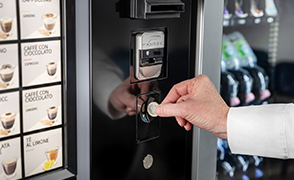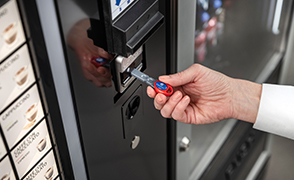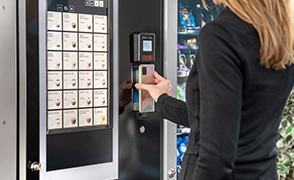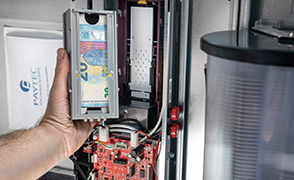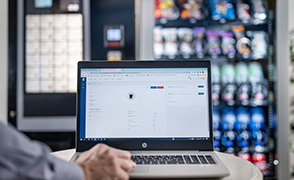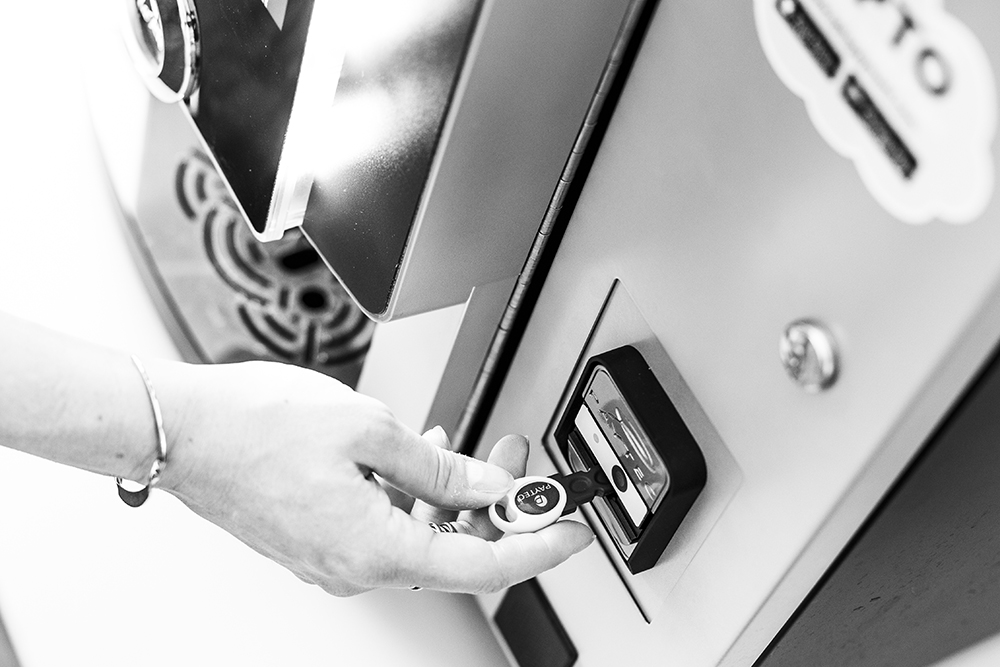
Protocols for vending machines
What’s this about? How many exist and which one should you choose?
Today, in Europe, Vending Machines use two main IT protocols: EXE (EXECUTIVE) and MDB (MultiDrop Bus).
What’s the difference? Let’s find out by retracing their history!
From mechanical to electronic distributors
We are in the 60s, in the United States, and the first vending machines make their appearance. They are tools designed to distribute cold drinks; their operation is completely mechanical (they use electrical connections and relays).
We have to wait until the 80s to witness the entry of electronics into daily life; the microprocessors thus began to be used also in vending machines.
Shortage of coins? The origin of validators
In the 70s, in Italy, a very special situation arose: perhaps due to tourists who use them as souvenirs or for simple speculation … there are no coins!
To solve this problem, peripherals that are not very common in European vending are introduced: coin and banknote validators that do not dispense change but store the credit introduced on a cashless support. In essence, these are plastic cards to be stamped (the precursor of the current key).
The EXE-protocol
In the 1980s, Mars Electronics, born from the snacks manufacturer Mars, developed the first serial protocol (Protocol A), known as the “Executive Protocol”.
The system was born first to manage the changegiver, and over the years it has evolved to be used also by cashless systems.
With the EXE protocol, the sales transaction is controlled by the changegiver and the prices can be managed in the machine or in the changegiver itself.
The MDB-protocol
The 90s are here. The “Coke” (now Coca-Cola), needs a low-cost change-giver system, which leaves the electronic part for the control of the sales transaction in charge of the distributor. The MDB protocol is born: MultiDrop Bus.
The MDB then becomes open source and evolves, but its operating mode always responds to the serial logic in which each device only obeys the command sent by the “electronic brain”: the master.
Inexpensive and easily extensible, MDP was adopted by NAMA in 1994, and took the name of ICP (Internal Communications Protocol) after being further developed by EVMMA (European Vending Machine Manufacturers Association).
In 1998 the MDB and ICP specifications are harmonized and released as MDB/ICP version 1.
The current specification (version 4.3), is supported by NAMA, EVMMA and EVA and allows a complete treatment of cash and cashless transactions with higher added value services.
MDB also lends itself well to functions such as remote vend (the ability to select the product directly from the phone screen), basket (the ability to select multiple products and purchase them with a single payment) and the management of prepaid coupons.
Which protocol to choose today?
The MDB protocol is today the only machine-peripheral interconnection Vending protocol that can be defined as a standard worldwide. However, some of the largest vending markets in Europe (Italy, France and Spain) have never abandoned Executive, which still represents 90% of VMCs here.
This derives in part from the habit of operators to use protocols already present in their fleet, in part from the legislature of these countries which provides for particular methods of transmission of fees to the Revenue Agency.
In fact, the EXE protocol offers the advantage of being able to completely extract even complex audit reports from the master system (which are designed to manage the accounting data of the transactions), a function not always possible directly from the vending machine, designed to dispense products.
The hybrid protocols of the years 2000
At the beginning of the new century, compromise solutions are born between the two protocols. This time the master (cashless system or changegiver) connects in Executive to the vending machine and in MDB to the other peripherals.
This type of architecture combines the advantages of the two protocols: the completeness of information management of EXE and the cost-effectiveness and modularity of MDB.
Its diffusion in countries that previously used purely EXE, has allowed the operators to broaden the range of their offer and has allowed them to choose to connect the individual peripherals based on criteria of convenience between price and performance.
An alternative protocol: a master system as a central unit between the VM and the payment systems
The most common problems for vending machine operators are theft and vandalism.
In these cases, usually, the thieves attack the coin mechanism.
In cases where the coin mechanism is equipped with a master in EXE protocol, not only are the accounting data also lost, but it will be necessary to report to the Revenue Agency which will have to authorize the replacement with a new master, with consequent blocking of the work. and loss of income.
By separating the central unit from the coin mechanism, however, the damage will be limited to the loss of the collection present in the coin mechanism and the value of the device to be replaced.
This is what happens, for example, with our Caiman system.
We advice, the choice is yours
As always, the choice of the best protocol will be conditioned by the business context, by the related constraints (for example the legislative ones, different for each country) and by the operator’s objectives.
Case-by-case evaluation and possible intelligent integration of protocols is the most cost-effective solution.
This is what we mean when we declare that we are a “safe guide in vending”: the experience gained over the years and our natural tendency to adapt products and services to the specific needs of companies makes us, first and foremost, consultants.
Our experts are therefore at your disposal for any doubt, information or comparison.
Back to Magazine